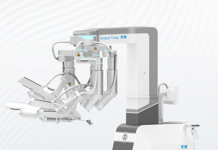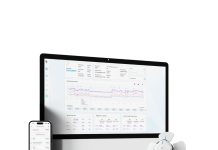Royal Philips has announced new research evaluating mobile cardiac outpatient telemetry (MCOT) as a first-line diagnostic ambulatory monitoring solution with post-cryptogenic stroke patients.

Mobile Cardiac Telemetry
The study determined that a 30-day continuous monitoring program using the Philips BioTel Heart MCOT patch, followed by an implantable loop recorder (ILR), improved atrial fibrillation (AF) detection rates and helped to reduce secondary stroke risk due to new anticoagulant use in subjects with the MCOT patch detected AF.
The study also demonstrated that use of initial MCOT monitoring achieved almost eight times lower costs, reducing the total cost per patient with detected AF by US$198,909 compared to monitoring with ILR only. These results strengthen recommendations for prolonged ECG monitoring for this patient population, Philips said in a press release.
The study evaluated a stroke population of 1,000 for one year to assess the differences in costs and outcomes of two monitoring options that are available to clinicians today to help improve patient care and improve efficiencies within the healthcare system. According to Philips, the findings revealed that using an MCOT patch followed by ILR in half of patients initially undiagnosed with AF leads to an overall cost-of-care savings of more than US$4 million. The company adds that the BioTel Heart MCOT detected 4.6 times more patients with AF than ILR alone. And for those with detected AF, the cost per patient was significantly lower when using the MCOT patch followed by ILR (US$ 29,598) than those being monitored with ILR alone (US$228,507).
“The diagnostic tools clinicians use to monitor this group of patients play an important role in finding the cause of the stroke and developing a personalised treatment plan,” said Andy Broadway, general manager of ambulatory monitoring and diagnostics at Philips. “This new research confirms that using Philips BioTel Heart MCOT as the first line of evaluation is more cost-effective and can provide the level of diagnostic confidence needed to help detect and diagnose atrial fibrillation, and potentially prevent a second stroke.”
Patients were monitored for 30 days and were included in one of two monitoring arms in the model: The MCOT patch arm where Philips BioTel Heart MCOT was used followed by ILR in undetected AF patients for 30 days, or the ILR arm where ILR served as the only monitoring tool.






